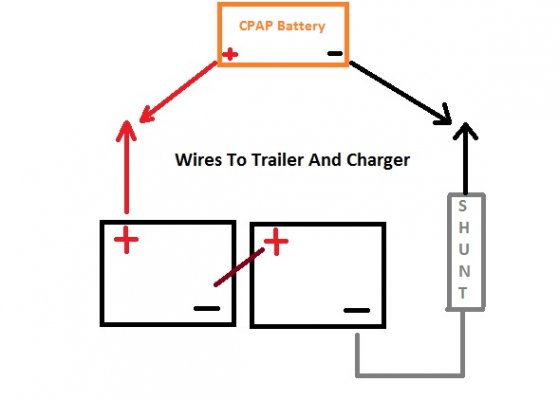Actually, that's likely the most effective solution.
A battery's rate of charge is determined by the voltage delivered to the battery terminals. Then the battery "drinks" in as much current as it needs depending on it's state of charge.
If the house and CPAP batteries are different sizes, or have different states of charge, they'll each "drink" from the voltage at different rates, each one tapering off independently as they approach full charge. Neither will interfere with the other's charging unless the combination draws enough current to max out the converter. Then the voltage sags until the batteries gain enough charge to draw less current. Once the batteries are less thirsty the voltage returns to normal.
Terms like multi-stage charging, bulk vs. absorption, etc. just further explain the above principle. Problems with mixing battery types are more related to getting dissimilar batteries to discharge equally, not with the charging itself.
If you have a battery amp-hour monitor, attach the CPAP battery's negative lead to the load side of the current shunt, not the battery side, so the additional current draw doesn't flow through the shunt and mess up the amp-hour indication.
Just clip the CPAP battery across the house batteries and let the house converter/charger do it's thing.

